Top Rankings
Success Virtual Learning Centers Of Michigan School District ranks among the top 20% of public school district in Michigan for:
Category
Attribute
Diversity
Most diverse schools (Top 1%)
For the 2025 school year, there is 1 public school serving 1,804 students in Success Virtual Learning Centers Of Michigan School District. This district's average testing ranking is 1/10, which is in the bottom 50% of public schools in Michigan.
Public School in Success Virtual Learning Centers Of Michigan School District have an average math proficiency score of 1% (versus the Michigan public school average of 34%), and reading proficiency score of 14% (versus the 46% statewide average).
Minority enrollment is 50% of the student body (majority Black), which is more than the Michigan public school average of 37% (majority Black).
Overview
This School District
This State (MI)
# Schools
1 School
3,509 Schools
# Students
1,804 Students
1,376,331 Students
# Teachers
26 Teachers
82,379 Teachers
Student : Teacher Ratio
69:1
69:1
District Rank
Success Virtual Learning Centers Of Michigan School District, which is ranked within the bottom 50% of all 851 school districts in Michigan (based off of combined math and reading proficiency testing data) for the 2021-2022 school year.
The school district's graduation rate of 23% has increased from 10-14% over five school years.
Overall District Rank
#830 out of 866 school districts
(Bottom 50%)
(Bottom 50%)
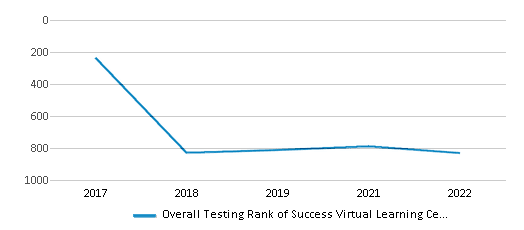
Math Test Scores (% Proficient)
≤1%
34%
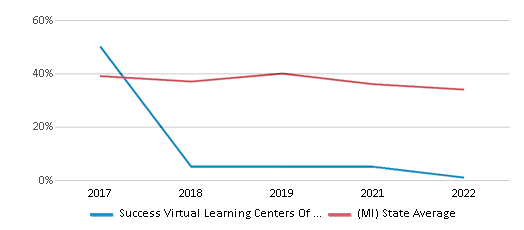
Reading/Language Arts Test Scores (% Proficient)
14%
45%
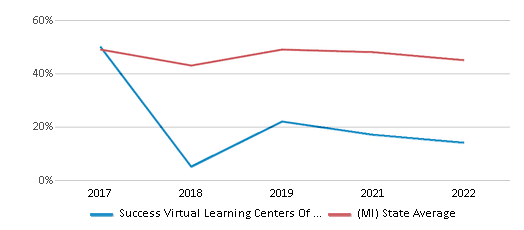
Science Test Scores (% Proficient)
14%
38%
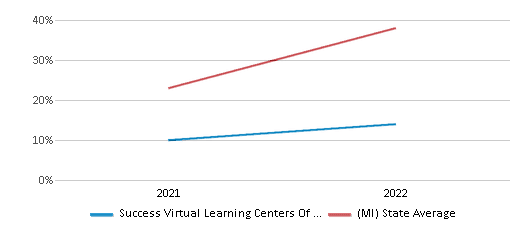
Graduation Rate
23%
81%
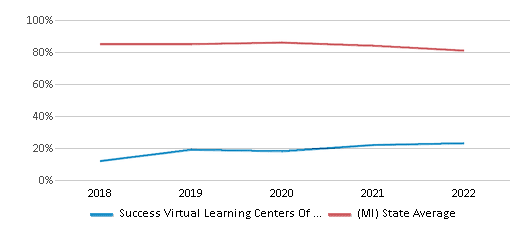
Students by Ethnicity:
Diversity Score
0.66
0.56
# American Indian Students
8 Students
8,574 Students
% American Indian Students
1%
1%
# Asian Students
8 Students
50,770 Students
% Asian Students
1%
4%
# Hispanic Students
314 Students
125,678 Students
% Hispanic Students
17%
9%
# Black Students
413 Students
244,434 Students
% Black Students
23%
18%
# White Students
909 Students
871,645 Students
% White Students
50%
63%
# Hawaiian Students
n/a
1,208 Students
% Hawaiian Students
n/a
n/a
# Two or more races Students
152 Students
73,219 Students
% of Two or more races Students
8%
5%
Students by Grade:
# Students in PK Grade:
-
-
# Students in K Grade:
-
110,461
# Students in 1st Grade:
-
100,790
# Students in 2nd Grade:
-
102,777
# Students in 3rd Grade:
-
100,401
# Students in 4th Grade:
-
101,847
# Students in 5th Grade:
-
101,136
# Students in 6th Grade:
-
102,120
# Students in 7th Grade:
-
103,285
# Students in 8th Grade:
-
102,692
# Students in 9th Grade:
591
114,669
# Students in 10th Grade:
489
112,993
# Students in 11th Grade:
489
109,871
# Students in 12th Grade:
235
109,317
# Ungraded Students:
-
3,972
District Revenue and Spending
The revenue/student of $8,930 in this school district is less than the state median of $18,510. The school district revenue/student has declined by 8% over four school years.
The school district's spending/student of $8,601 is less than the state median of $17,693. The school district spending/student has declined by 8% over four school years.
Total Revenue
$16 MM
$25,476 MM
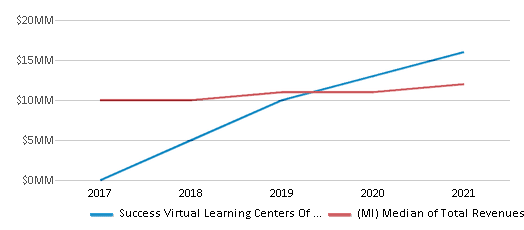
Spending
$16 MM
$24,351 MM
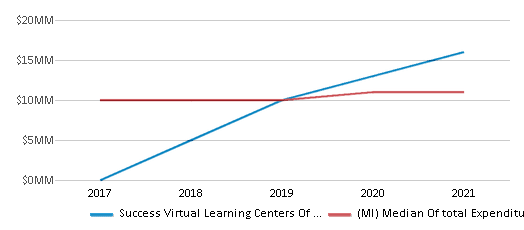
Revenue / Student
$8,930
$18,510
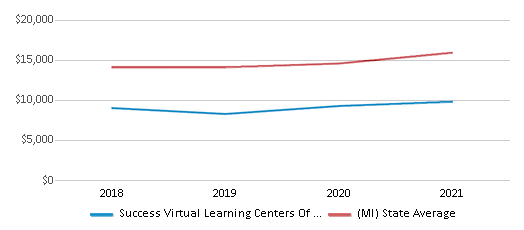
Spending / Student
$8,601
$17,693
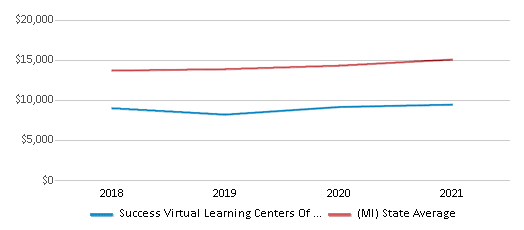
Best Success Virtual Learning Centers Of Michigan School District Public Schools (2025)
School
(Math and Reading Proficiency)
(Math and Reading Proficiency)
Location
Grades
Students
Rank: #11.
Success Virtual Learning Centers Of Michigan
Alternative School
Charter School
Charter School
(Math: ≤1% | Reading: 14%)
Rank:
Rank:
1/
Bottom 50%10
7188 Avenue B
Vestaburg, MI 48891
(989) 424-6314
Vestaburg, MI 48891
(989) 424-6314
Grades: 9-12
| 1,804 students
Frequently Asked Questions
How many schools belong to Success Virtual Learning Centers Of Michigan School District?
Success Virtual Learning Centers Of Michigan School District manages 1 public schools serving 1,804 students.
What is the rank of Success Virtual Learning Centers Ofchigan School District?
Success Virtual Learning Centers Ofchigan School District is ranked #831 out of 851 school districts in Michigan (bottom 50%) based off of combined math and reading proficiency testing data for the 2021-2022 school year. This district ranks in the top 20% of Michigan school districts for: Most diverse schools (Top 1%)
What is the racial composition of students in Success Virtual Learning Centers Ofchigan School District?
50% of Success Virtual Learning Centers Ofchigan School District students are White, 23% of students are Black, 17% of students are Hispanic, 8% of students are Two or more races, 1% of students are American Indian, and 1% of students are Asian.
What is the student/teacher ratio of Success Virtual Learning Centers Ofchigan School District?
Success Virtual Learning Centers Ofchigan School District has a student/teacher ratio of 69:1, which is higher than the Michigan state average of 17:1.
What is Success Virtual Learning Centers Ofchigan School District's spending/student ratio?
The school district's spending/student of $8,601 is less than the state median of $17,693. The school district spending/student has declined by 8% over four school years.
Recent Articles

What Is A Charter School?
Explore the world of charter schools in this comprehensive guide. Learn about their history, how they operate, and the pros and cons of this educational innovation. Discover key facts about charter schools, including admission policies, demographics, and funding, as well as what to look for when considering a charter school for your child.

10 Reasons Why High School Sports Benefit Students
Discover the 10 compelling reasons why high school sports are beneficial for students. This comprehensive article explores how athletics enhance academic performance, foster personal growth, and develop crucial life skills. From improved fitness and time management to leadership development and community representation, learn why participating in high school sports can be a game-changer for students' overall success and well-being.

February 05, 2025
Understanding the U.S. Department of Education: Structure, Impact, and EvolutionWe explore how the Department of Education shapes American education, from its cabinet-level leadership to its impact on millions of students, written for general audiences seeking clarity on this vital institution.





